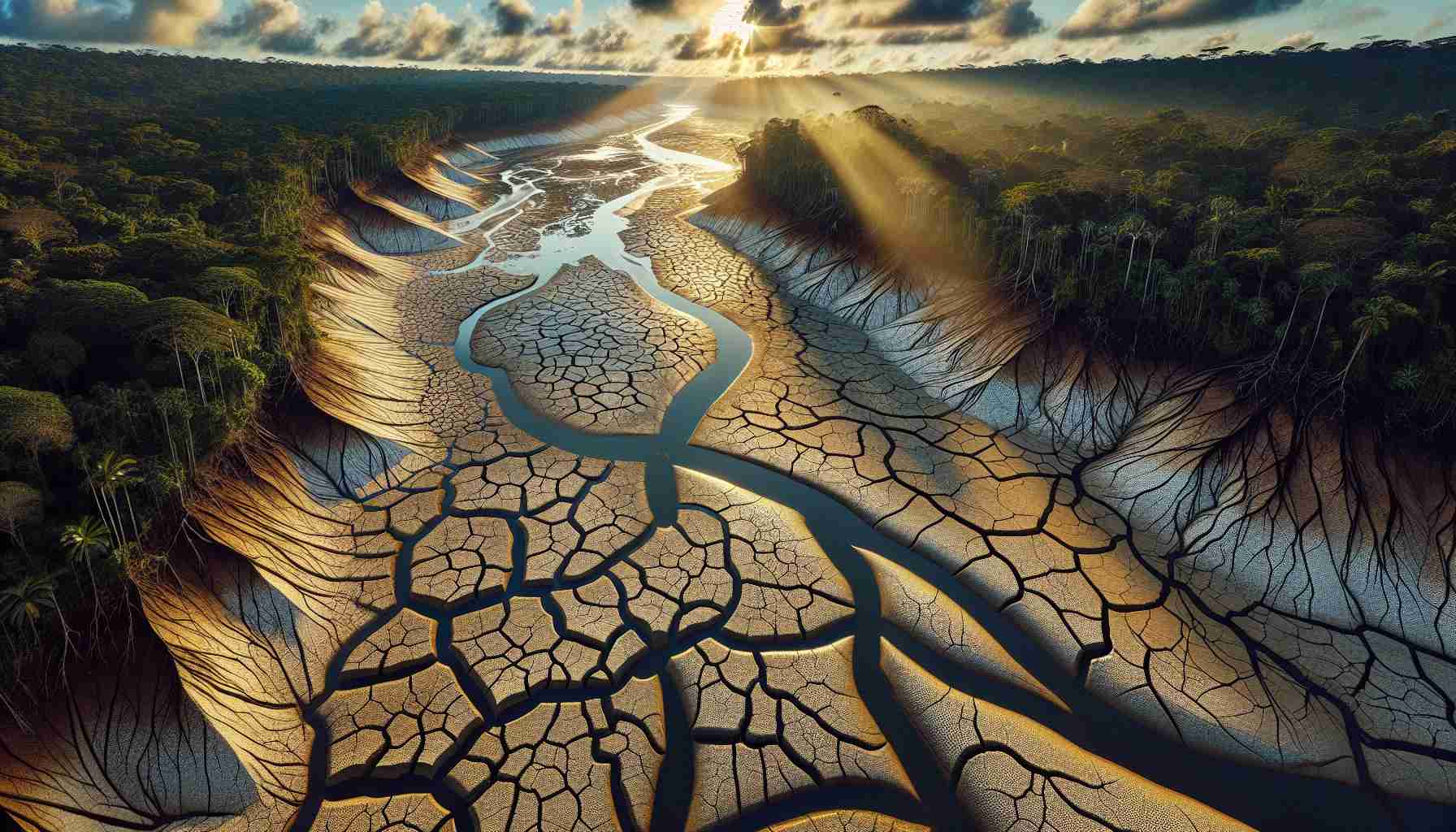
Recent satellite imagery reveals a stark transformation in the Amazon Basin, shifting from abundant waters to parched riverbeds within just a few months. Observations from September 2024 show a dramatic reduction in water levels across the Amazon River and its tributaries, raising alarm among environmentalists and residents alike.
This year’s drought is reported to be the most severe on record, a crisis that has included the stranding of vessels and the adverse effects on local wildlife, particularly the endangered dolphin population. Images have surfaced showing vessels trapped in sand where there used to be flowing water and the grim reality of deceased dolphins littering the dry riverbanks. Reports indicate that over 200 dolphins perished last year, highlighting the dire circumstances these creatures face.
The Rio Negro, a crucial tributary, is collapsing at a rate of nearly 7 inches daily, with parts of Brazil experiencing over four months without rainfall. The executive director of a prominent environmental nonprofit has emphasized the unprecedented nature of this crisis and its implications for the livelihoods of millions in Brazil.
Climate experts attribute this extreme weather to a combination of El Niño and global warming, exacerbating the situation significantly. Deforestation concerns loom large, as the forest plays a critical role in carbon storage and biodiversity. The ongoing threat of wildfires amplifies the urgency for immediate action to protect this vital ecosystem.
Efforts to combat this crisis hinge on governmental policies aimed at reducing emissions and restoring deforested areas, vital for ensuring the Amazon’s future resilience.
Severe Drought Engulfs the Amazon Basin: Unveiling the Broader Impact
As the severe drought crisis in the Amazon Basin deepens, its repercussions extend beyond the immediate environmental concerns. Recent studies indicate that this drought may not only have local ecological impacts but may also affect global weather patterns and the carbon cycle significantly.
What are the long-term ecological consequences of the drought?
The prolonged drought is leading to a shift in the biome dynamics of the Amazon, which could become more savanna-like as continuous dry conditions kill off sensitive species and promote fire-prone vegetation. This transition threatens the intricate balance of the Amazonian ecosystem, putting countless species at risk of extinction and degrading crucial habitats.
How does this drought influence global climate change?
The Amazon rainforest is often referred to as the “lungs of the Earth” due to its ability to absorb carbon dioxide and release oxygen. As trees die from drought and increased forest fires, they release stored carbon back into the atmosphere, contributing to the greenhouse effect and potentially accelerating global warming. Estimates suggest that a large-scale dieback could release billions of tons of carbon emissions, exacerbating the climate crisis.
What are the socioeconomic impacts on local communities?
The drought is severely affecting local communities, particularly indigenous populations who rely on the river for their livelihoods. Fish populations are declining significantly, making traditional fishing practices unsustainable. This not only leads to food insecurity but also threatens cultural identities intertwined with the river’s ecosystem.
What are the key challenges in addressing this crisis?
One of the main challenges is coordinating effective action among multiple stakeholders, including governments, indigenous groups, NGOs, and international organizations. Conflicting interests can hinder consensus on policies aimed at forest protection and water management. Moreover, enforcement of environmental regulations remains weak, allowing illegal activities such as deforestation and mining to persist.
What are some advantages and disadvantages of the proposed solutions?
Efforts to curb the drought’s impact include reforestation initiatives and stricter regulations on land use.
Advantages of these solutions include the potential to restore biodiversity, improve water retention in the soil, and enhance local economies through sustainable practices. Improved forest management can also generate carbon credits for international markets, providing financial incentives for conservation.
Disadvantages, however, include the financial burden on already-struggling governments and the resistance from landowners and corporations that prioritize short-term economic gain over ecological health. Furthermore, the time taken for reforestation efforts to result in a functioning ecosystem can be years or decades, making immediate relief efforts challenging.
In summary, the severe drought in the Amazon Basin presents a multifaceted challenge with ecological, climatic, and societal repercussions that demand urgent action. As stakeholders grapple with this crisis, the need for a balanced approach that addresses environmental integrity and community welfare becomes increasingly critical.
For further information on environmental issues and conservation efforts, visit the World Wildlife Fund and the Greenpeace websites.



